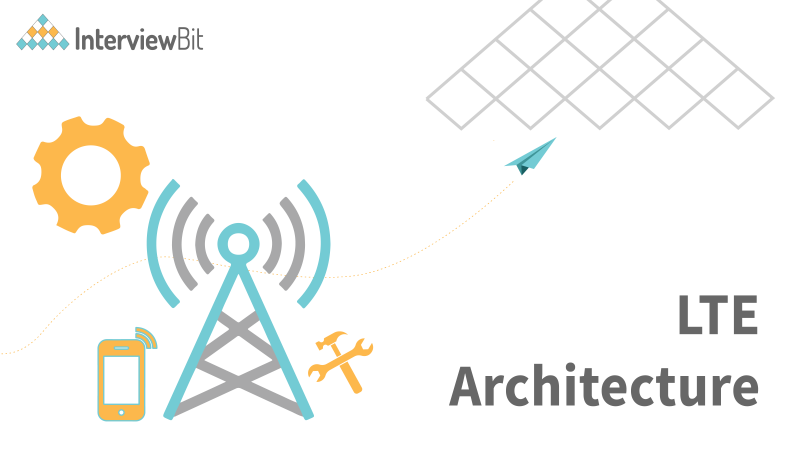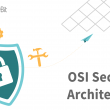In this blog, the LTE network architecture is explained in terms of the UE. The reference model is first described, and the U-TRAN and EPC entities and their functions are listed. Next, are the advantages of LTE Architecture and the disadvantages of LTE Architecture. The last part describes a summary of the LTE Architecture.
Introduction
GSM and HSPA are among the most popular wireless standards for mobile devices and data terminals. They are used to increase capacity and speed by employing a different radio interface with the core network. Long Term Evolution is one of them. Devices that support both GSM and UMTS networks and CDMA 2000 networks can use LTE frequencies and bands in different countries. Multi-band phones are the only ones that can use LTE frequencies and bands in all countries where it is supported.
Mobile phones and data terminals that use the Long Term Evolution Standard (LTE) are subjected to wireless communications and high-speed data transmission standards. The GSM/EDGE and UMTS/HSPA network technologies are used as a basis. As a result, increased capacity and increased speed are achieved by simplifying the core network and adopting a different radio interface.
Confused about your next job?
LTE Architecture
The high-level network architecture of LTE is composed of the following three key components:
- The User Equipment (UE).
- The Evolved UMTS Terrestrial Radio Access Network (E-UTRAN).
- The Evolved Packet Core (EPC).
An improved packet core communicates with packet data networks such as the internet, a company’s private network or the IP multimedia subsystem. The interfaces between the different parts of the system are denoted Uu, S1, and SGi as shown below:
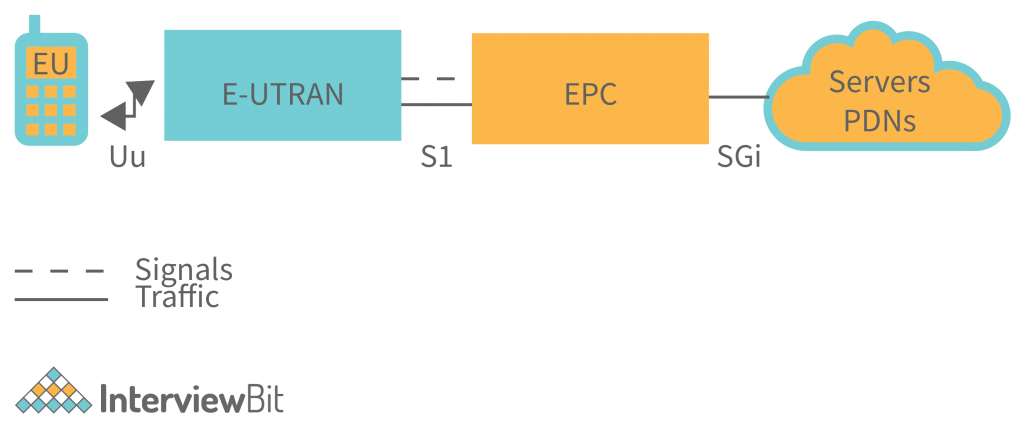
User Equipment (UE)
The internal architecture of the user equipment for LTE is exactly the same as that of UMTS and GSM, which is mobile equipment (ME). The mobile equipment has the following core modules:
- All communication functions are handled by Mobile Termination (MT).
- The data streams are terminated in Terminal Equipment (TE).
- The SIM card for LTE equipment is known as the Universal Integrated Circuit Card (UICC). This application is known as the Universal Subscriber Identity Module (USIM).
The information stored on a USIM card is similar to that of a 3G SIM card, including the user’s telephone number, home network identity, and security keys.
The E-UTRAN (The Access network)
An instance of the evolution of a UMTS Terrestrial Radio Access Network (E-UTRAN) architecture has been illustrated below.
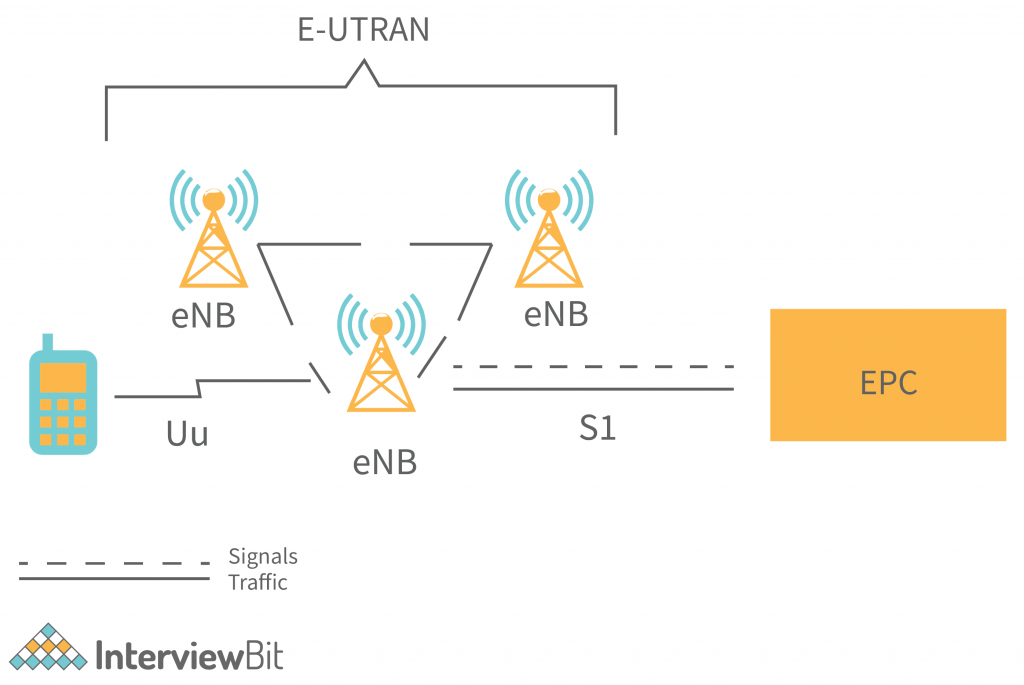
An evolved packet core or ePC controls the various information packets that are sent between mobile devices and the core network. In contrast to an eNB, which is a base station that controls mobile devices in one or more cells, an eNodeB controls radio communication between an evolved packet core or ePC and mobile devices.
An eNB can perform two main functions when connected to an LTE mobile device:
- The eBN sends and receives radio signals to and from all the mobile devices using the analogue and digital signal processing functions of the LTE air interface.
- The eNB sends handover commands to all of its mobiles at a low level, controlling their operation.
The EPC allows each eBN to be connected to the S1 interface of nearby base stations and the X2 interface for signalling and packet forwarding during handover, but it can also be connected to them via the S1 interface.
A home eNB (HeNB) is a user-owned base station for providing femtocell coverage in the home. A home eNB is part of a closed subscriber group (CSG) and may only be reached by mobile phones with a USIM that also belongs to the CSG.
The Evolved Packet Core (EPC) (The core network)
The architecture of the Evolved Packet Core (EPC) has been revealed in the diagram. Besides, a few elements have not been shown in the diagram for simplicity reasons. The Earthquake and Tsunami Warning System (ETWS), Equipment Identity Register (EIR) and Policy Control and Charging Rules Function (PCRF) are examples of these components.
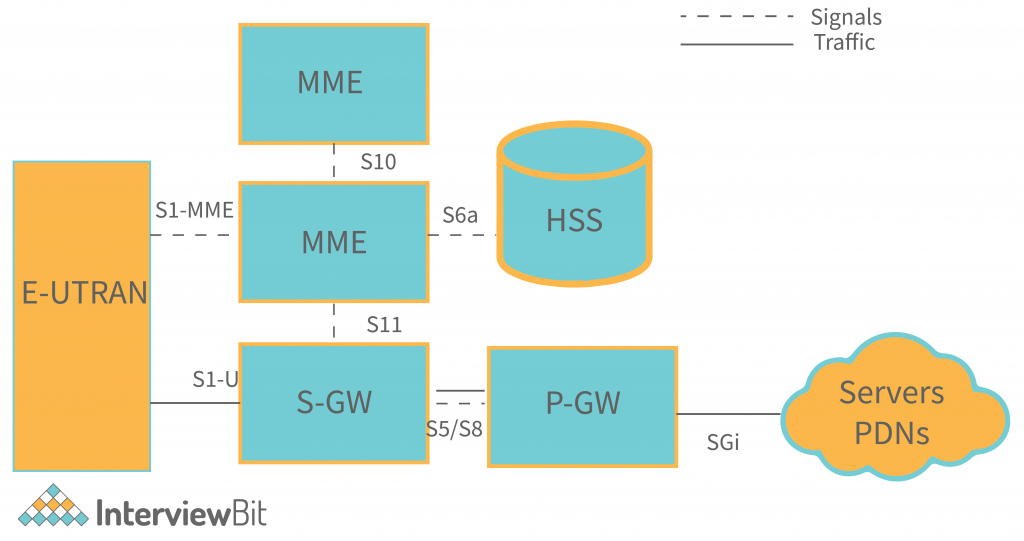
The components shown in the above architecture are listed below, with a brief description.
- The central database that contains information about all the network operator’s subscribers is known as the Home Subscriber Server (HSS). This information is carried over from UMTS and GSM and is located in the Home Subscriber Server (HSS) component.
- SGi is used to communicate with the outside world, i.e. packet data networks PDN, in which the P-GW is located. An APN is used to identify each packet data network. In addition to functioning as a GPRS support node (GGSN) and a serving GPRS support node (SGSN) for UMTS and GSM, the P-GW is comparable to the GSN and SGSN in packet data networks.
- The S-GW acts as a router between the base station and the PDN gateway, handling data forwarding.
- A mobile network operator’s (MNO) highest level control entity, the Home Subscriber Server (HSS), controls the mobile’s high-level operation through signalling messages.
- The PCEF (Policy Control Enforcement Function) is a component that is obscured in the above diagram, but it controls policy control decision-making as well as policy control charging functionality in the P-GW. The PCRF (Policy Control and Charging Rules Function) is a portion of the PCEF that controls policy control charging functionality.
When the two devices are on the same network, S5/S8 is used to communicate between the serving and PDN gateways. Which of the two interfaces is used, S5 or S8 depends on the network configuration.
Functional split between the E-UTRAN and the EPC
The graphical explanation provides an overview of the splits between the E-UTRAN and the EPC in an LTE network.
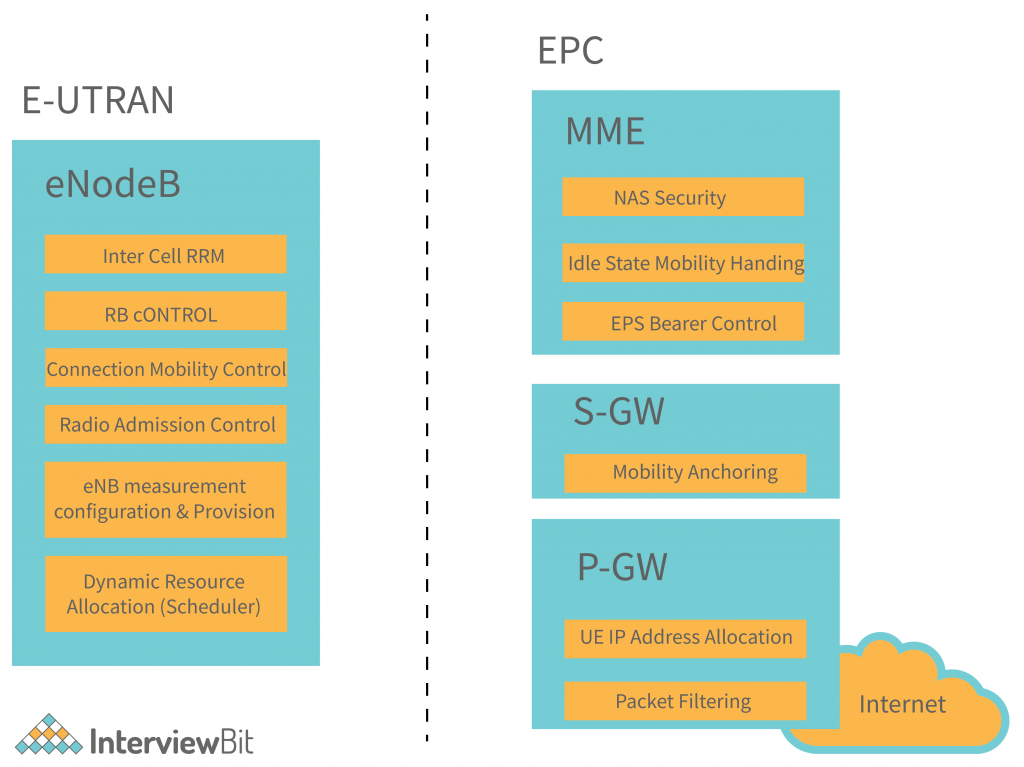
Advantages of LTE Architecture
LTE technology is highly popular nowadays (2020). This is because of the growing popularity of 4G smartphones that utilise this technology. A high-performance air interface for cellular mobile communication systems has been constructed as part of LTE innovation. The mobile communications system has been improved as a result. It is a fast data network. It is used for improving mobile telephone systems.
- Data and voice can be exchanged between participants using LTE. Because of packet switching, data and voice can be sent using the same network.
- Data sent between the sender and receiver can be high amounts.
- The better life of smartphone batteries is caused by all data exchange being done with very little power consumption.
- It has fast file upload and download speeds.
- It reduces the load on the network by releasing network usage faster.
- Reducing service traffic and favouring fewer crashes is the aim of this initiative.
- You can watch live shows, matches, and events using LTE.
Disadvantages of LTE Architecture
4G, also known as long-term evolution, is a fifth generation mobile network. It aims to offer more dependable mobile broadband Internet services such as a mobile device, computer, tablet, or laptop. Because of the fast speed and efficiency of 4G, mobile devices took over the market. To learn more about 4G networks, here is a look at their advantages and disadvantages.
- Some cities do not have this service.
- Signals in transit, such as buses and trains, need to be improved by increasing the number of towers and introducing new technologies.
- The complexity of LTE makes it necessary for competent people to manage the system. They might even need to be paid a higher salary.
- Old versions of smartphones cannot make use of this technology.
- The cost of buying new LTE smartphones is high.
Conclusion
LTE architecture is an evolving standard that will be improved in the future. Although it is still a work in progress, it is promising. The performance qualities of LTE will show improvement as more LTE-enabled devices come on board. The information on this blog can give you a basic understanding of LTE architecture. Apart from that, you can also read other blogs related to LTE.
GSM and HSPA are among the most popular wireless standards for mobile devices and data terminals. They are used to increase capacity and speed by employing a different radio interface with the core network. Long Term Evolution is one of them. Devices that support both GSM and UMTS networks and CDMA 2000 networks can use LTE frequencies and bands in different countries. Multi-band phones are the only ones that can use LTE frequencies and bands in all countries where it is supported.


